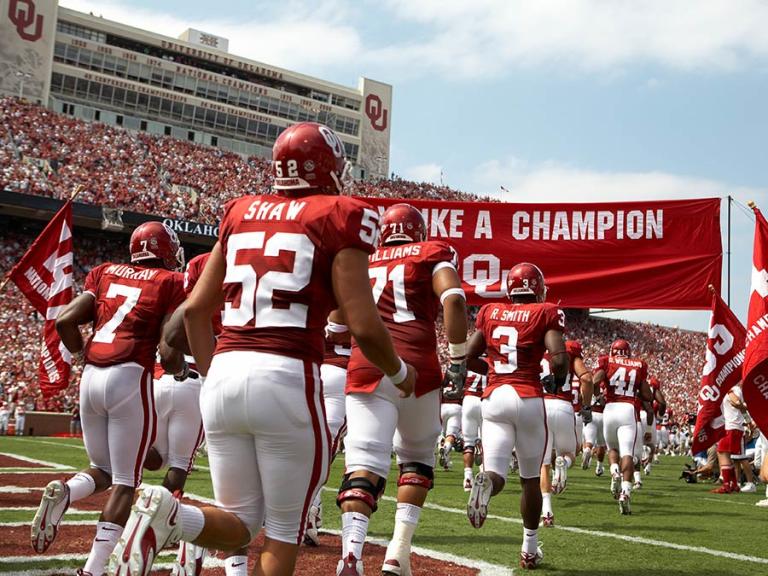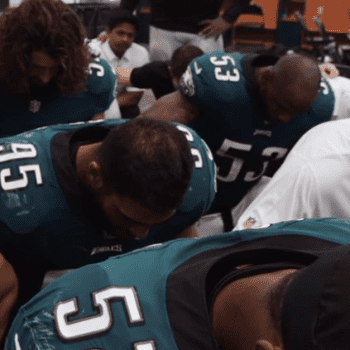
My undergraduate alma mater, the University of Oklahoma, along with arch-rival Texas, has blown up the Big-12 Conference by moving to the Southeast Conference (SEC).
Now the University of Southern California (USC)–which lured away OU’s football coach Lincoln Riley–and the University of California in Los Angeles (UCLA) have blown up the Pac-10 by announcing plans to join the Big 10.
So the spurned conferences are trying to make up their numbers by luring schools from other conferences, thus blowing them up as well.
The problem in college football is not just the violence to the English language and the elements of mathematics. Already, the Big 10 has 14 members. With two California teams, it should be called the Big 16, but that would damage the brand. The Big 12 has the opposite inconsistency, with only 10 members. Take OU and UT away and you would have the Big 8, which is what the conference was called when I was in college.
The new conferences will eliminate the regional identities that were the basis of the conferences originally: The Big 10 for the northern midwest, the Big 12 for the southern midwest, the Pac-10 in the far western states close to the Pacific Ocean, and the SEC for, as the name implies, the southeastern states. (Go here for the others.) The new Big 10 will stretch from sea to shining sea, from southern California to Maryland.
But the problems in college football go beyond greater travel times. High-profile teams, thanks to recent changes in NCAA rules, can now dominate recruiting by dangling big money from “Name, Image, and Likeness” deals to blue-chip players. Within the conferences, a few powerhouse teams keep winning the championships year after year over outmatched schools. Even very good teams from the less-heralded conferences have little chance to get into the top bowl games, let alone win national championships. And the powerhouse teams beat each other, preventing otherwise excellent teams from having the perfect or near-perfect records now necessary to reach the championship.
As a result, extremely good teams go nowhere. Most games of the season are blowouts or meaningless. Most schools have no chance for the big time. And the big time teams, having become mainly farm teams for the NFL, get the good players, but have them only for a year or two before they leave for the pro’s or for the Transfer Portal.
As old rivalries and team loyalties disappear, the connection of college football to the actual college gets weaker and weaker. In fact, I am persuaded that the main function of sports teams for universities–especially state universities–is to build support from the public so that the public doesn’t pay any attention to what the universities are teaching in the classroom. If taxpayers knew about the Marxism, Critical Race Theory, and Progressive politics being taught in their state universities, they would rise up against them. But they won’t, as long as they have a football team they can root for.
What can be done to save college football?
Andrew Beaton and Joshua Robinson offer a brilliant idea in What College Football Can Learn from the Other Football, published in the Wall Street Journal. It won’t solve everything, but it would make college games competitive and meaningful again.
It involves scrapping conferences altogether in favor of a system based on “promotion and relegation.” Teams are grouped into leagues according to their strength. At the end of the season, the three teams in each league with the best records are promoted into the next higher league. And the three teams with the worst records in each league are demoted down to the next lower league.
In English soccer’s pyramid system, the concept is simple. The Premier League sits at the top and the three teams that finish the season at the bottom of the standings are booted down into the second-tier Championship. The Championship, in turn, sends up three teams to take their place. The same happens between the Championship and two more professional leagues further down, reshuffling the divisions every season.
But the ladder doesn’t stop there. Keep going and you’ll find a string of semipro and amateur leagues, all linked by annual promotion and relegation. In theory at least, it would be possible for ninth-tier Frickley Athletic or Penistone Church Football Club to reach the Premier League if they suddenly drew the interest of a Qatari investor and set off on years-long winning streaks.
Already in American football, the teams have a de facto stratification. Having teams at the same level play each other would make every game exciting. And every game would be meaningful, even for teams in the shadow of the powerhouses. Also, smaller schools with a good program would have the chance to claw their way into national contention. As Beaton and Robinson say,
Every game would matter more for both the best and the worst teams. An Indiana-Illinois tilt to stave off demotion to the Big 12 would be the biggest game either program has played in years.
For the likes of Georgia or Alabama, it wouldn’t change all that much—they’re the college equivalents of Manchester City and Liverpool. But for the rest, all the way to Appalachian State and Middle Tennessee, it would create a path to daydream about.
What do you think? Would this system work in America? Could it be adapted for professional sports?
Photo: “Oklahoma Sooners Enter Field” by John Silks, CC BY-SA 3.0 <http://creativecommons.org/licenses/by-sa/3.0/>, via Wikimedia Commons

















